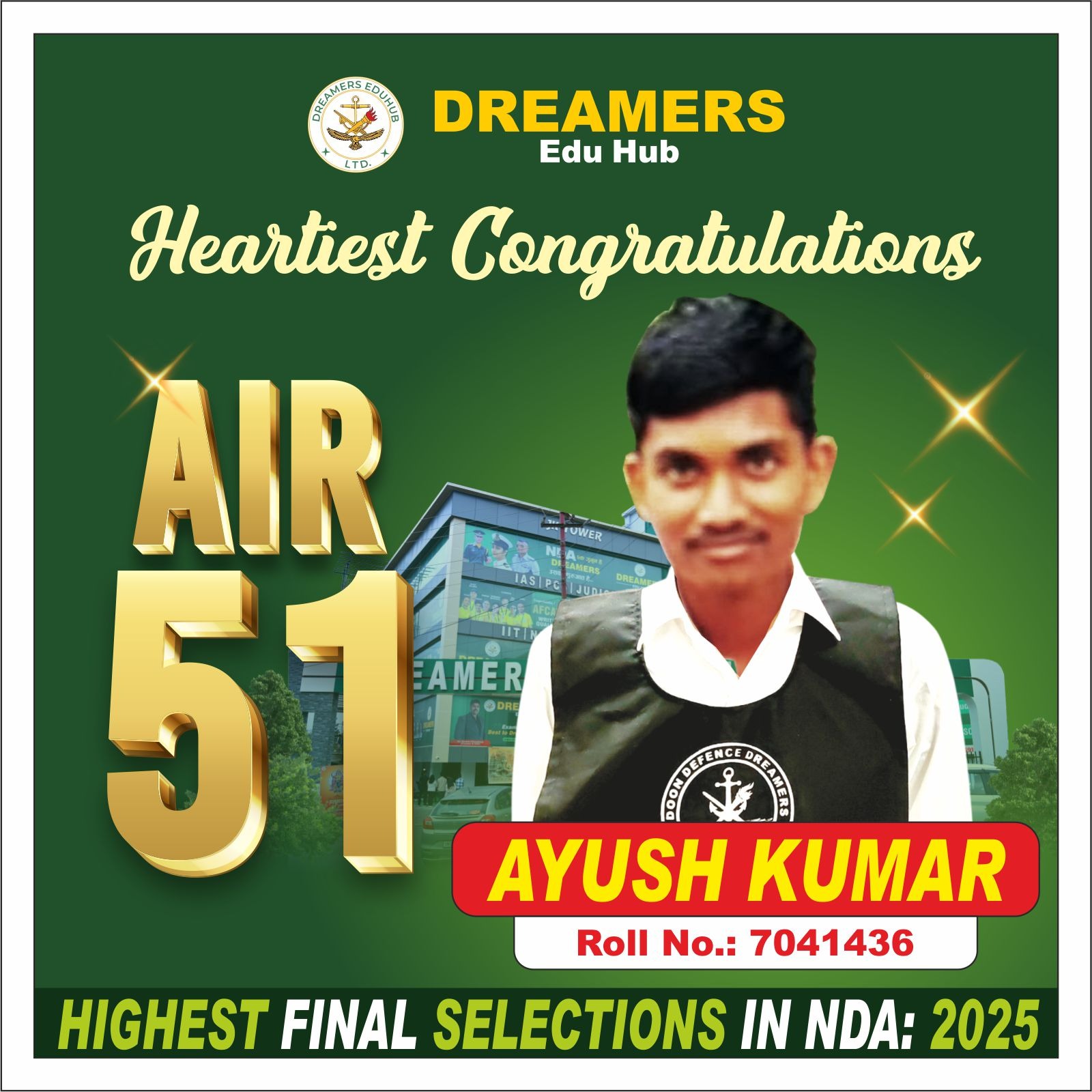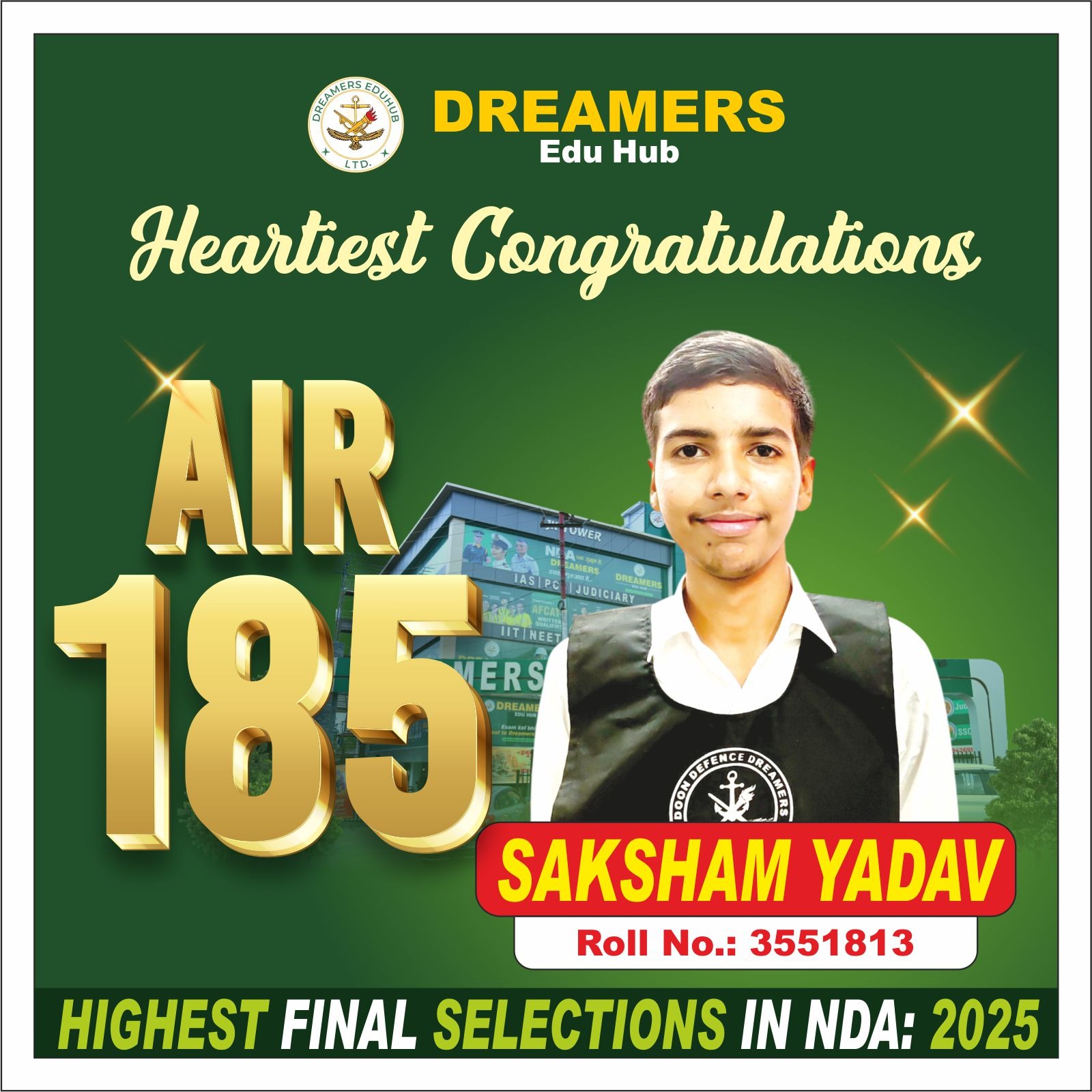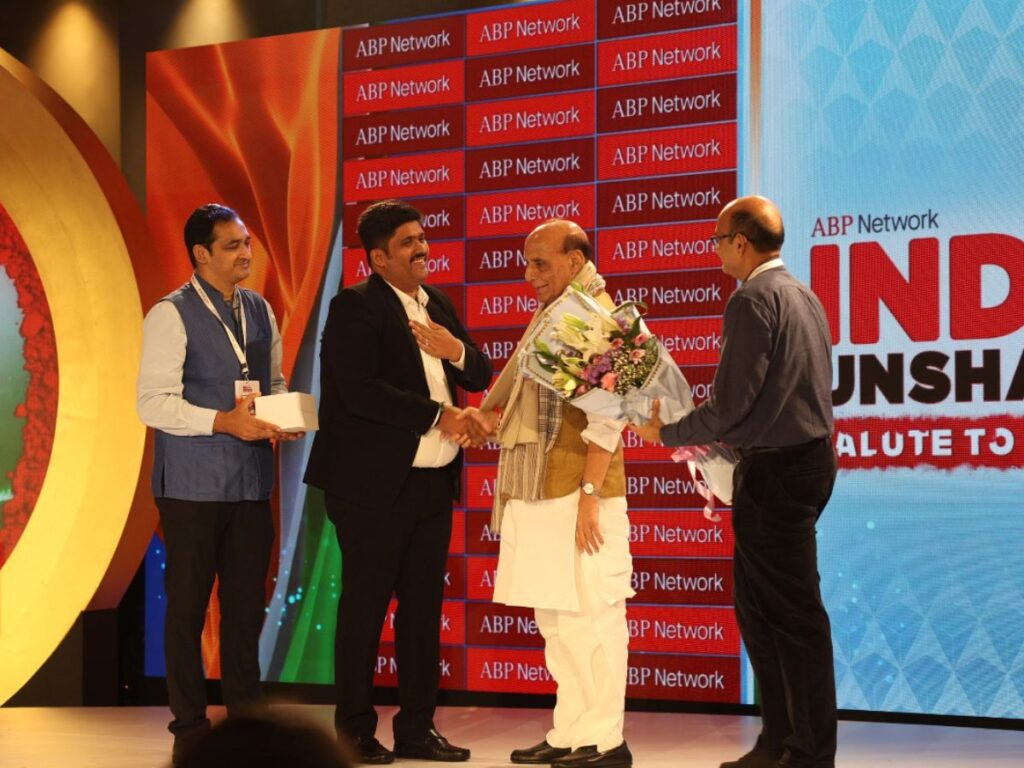Why Defence Research and Development Organisation is so important
When we hear about Agni missiles, BrahMos, Pinaka rocket systems or the Arjun tank, one name silently stands behind all these achievements – Defence Research and Development Organisation.
This organisation is the R&D backbone of India’s armed forces. It designs and develops weapons, missiles, radars, tanks, drones, sonars and many other systems so that India does not have to depend only on foreign imports.
In simple words, the Defence Research and Development Organisation is the “science and technology power-house” that helps the Army, Navy and Air Force to fight with indigenous, Made-in-India systems. It is a key pillar of Atmanirbhar Bharat in defence.
In this blog, we will understand:
When and how the Defence Research and Development Organisation was formed
Its structure, vision and main work areas
Details of important missile programmes like Agni, Prithvi, Akash, Nag and the BrahMos cruise missile
Major land systems such as Arjun tank, Pinaka rocket launcher and ATAGS gun
Other key projects, achievements, challenges and future roadmap
The language will be simple, so even a beginner or defence aspirant can understand easily.
Formation and Early History of Defence Research and Development Organisation
The Defence Research and Development Organisation was formally created in 1958. It was not built from zero. Instead, it was formed by merging three existing organisations:
Defence Science Organisation (DSO)
Technical Development Establishments (TDEs) of the Indian Army
Directorate of Technical Development and Production (DTDP) of Indian Ordnance Factories
By combining these, the government created a single large body called the Defence Research and Development Organisation under the Ministry of Defence.
In the initial years, it had around 10 laboratories. The focus was mainly on basic defence technologies – simple weapons, explosives, materials and some small systems. Over the decades, the organisation expanded step by step.
Important milestones in its growth:
1958–1970s: Foundation years – building labs, recruiting scientists, starting basic projects in armaments, electronics and materials.
1980: Creation of a separate Department of Defence Research and Development to give more focused control over the organisation.
1980s: Launch of big programmes like the Integrated Guided Missile Development Programme (IGMDP) which changed India’s missile capability.
1990s–2000s: Strong push on missiles, main battle tank, radars, torpedoes, sonars and electronic warfare systems.
2010 onwards: Focus on network-centric warfare, long-range missiles, cruise missiles like BrahMos, ballistic missile defence, UAVs, and high-tech artillery.
Today, the Defence Research and Development Organisation has a large network of more than 50 laboratories and establishments working in different fields like aeronautics, missiles, naval systems, electronics, life sciences and materials.
Structure, Motto and Vision
The organisation is headquartered at DRDO Bhawan, New Delhi. It works under the Ministry of Defence.
Some key points about its structure and role:
It has around 30,000 personnel, including about 5,000 scientists.
Its laboratories are spread across India – in cities like Hyderabad, Bengaluru, Pune, Dehradun, Chandigarh, Gwalior, Delhi, etc.
Each lab is focused on a particular area – missiles, aeronautics, electronics, naval systems, combat vehicles, life sciences, etc.
Motto:
The motto of the Defence Research and Development Organisation is:
“Strength’s Origin is in Science” (Sanskrit: Balasya Moolam Vigyanam).
This clearly shows the philosophy of the organisation – a strong military can only be built on strong science and technology.
Main vision and objectives:
Make India self-reliant in critical defence technologies
Reduce dependence on foreign weapons
Design and develop systems suited to Indian conditions – deserts, mountains, high altitude, sea, jungles
Support the Army, Navy and Air Force with upgrades, trials, testing and lifetime support
Transfer technology to Indian public and private industries so that weapons can be produced at scale in India
Because of the continuous effort of the Defence Research and Development Organisation, India has moved from a pure importer to a country that can design, manufacture and even export defence equipment.
Major Missile Programmes of DRDO
Missiles are the most famous products of this organisation. The missile journey took a big leap with the Integrated Guided Missile Development Programme (IGMDP) started in the early 1980s under the leadership of Dr A.P.J. Abdul Kalam.
Under IGMDP, five main missile systems were developed:
Prithvi – Short-range surface-to-surface missile
Agni – Long-range surface-to-surface ballistic missile series
Akash – Medium-range surface-to-air missile
Trishul – Short-range surface-to-air missile
Nag – Anti-tank guided missile
Let us see some important details.
Prithvi Missile
Type: Short-range surface-to-surface ballistic missile
Role: Tactical battlefield missile
Range: Initially around 150–250 km depending on version
Users: Indian Army and Indian Air Force
Prithvi was one of India’s first indigenous ballistic missiles, giving the armed forces a home-grown option for short-range strike. It came from the IGMDP family.
Agni Missile Series
The Agni family is the backbone of India’s strategic missile forces.
Agni-I: Short to intermediate-range, around 700–900 km.
Agni-II, III, IV, V: These extend India’s reach to intermediate and intercontinental ranges, with Agni-V providing over 5,000 km class capability as reported by open sources.
Agni missiles give India a credible deterrence capability, meaning the country can respond strongly if attacked. These missiles are road or rail mobile and can carry different types of warheads.
Akash Missile
Type: Medium-range surface-to-air missile
Role: Air defence against fighter aircraft, helicopters and drones
Range: Around 25–30 km for earlier versions, with improved ranges in newer variants
Akash is deployed by both the Indian Air Force and Indian Army to protect critical assets and formations from enemy aircraft. It is mounted on mobile launchers and supported by radars and command systems developed by the same organisation.
Nag Anti-Tank Guided Missile
Type: Third-generation anti-tank guided missile
Role: Destroy enemy tanks and armoured vehicles
Launch platforms: Land-based launcher, helicopter-launched (Helina) and other variants
Nag completes the IGMDP family by giving the Army a fire-and-forget missile that can hit modern tanks with high accuracy.
BrahMos – The Supersonic Cruise Missile
One of the most famous products associated with the Defence Research and Development Organisation is the BrahMos missile.
Type: Long-range supersonic cruise missile
Speed: Up to around Mach 3 (three times the speed of sound)
Range: Initial versions around 290–350 km; newer extended-range versions reported with higher ranges in open sources
Platforms: Ship, submarine, land-based launcher and aircraft (Su-30MKI)
Joint venture: Developed by BrahMos Aerospace, a joint venture between the organisation and Russia’s NPO Mashinostroyeniya.
First test: Early 2000s, with induction into the Indian armed forces afterwards.
BrahMos is special because:
It travels at supersonic speed, making interception difficult
It can skim the sea at very low height and hit with high precision
It is nuclear-capable and can carry a heavy conventional warhead
BrahMos has also become one of the first major exported missile systems from India, with the Philippines signing a deal to buy coastal defence batteries.
Land Combat Systems: Tanks, Rockets and Artillery
The Defence Research and Development Organisation is not only about missiles. It also plays a big role in tanks, rocket launchers and artillery guns.
Arjun Main Battle Tank
The Arjun main battle tank (MBT) is one of the most well-known land systems developed by this organisation.
Project start: The Arjun project was initiated in the early 1970s to build a state-of-the-art tank for the Indian Army.
Developer: Combat Vehicles Research and Development Establishment (CVRDE), one of the organisation’s labs.
Induction: Arjun entered service with the Indian Army around 2004.
Key features:
120 mm rifled gun capable of firing different modern ammunition
Advanced Kanchan armour for high protection
Modern fire control, night-fighting capability and good mobility
The upgraded Arjun Mk-1A variant further improves firepower, protection and electronics.
Pinaka Multi-Barrel Rocket Launcher
Pinaka is a multi-barrel rocket launcher system developed for the Indian Army.
Type: 214 mm multi-barrel rocket launcher
Range: Around 45 km for early Mark-I Enhanced rockets, and up to about 90 km for Mark-II versions.
Role: To deliver a large volume of fire on enemy positions in a very short time (12 rockets in about 44 seconds).
Use: Successfully used in the Kargil War to neutralise enemy positions on mountain tops.
Pinaka is a major success story of the Defence Research and Development Organisation. It is now being exported and considered by other countries, and advanced variants with ranges up to 120 km and 300 km are under development.
ATAGS – Advanced Towed Artillery Gun System
ATAGS is a new-generation 155 mm, 52-calibre towed howitzer.
Project start: Around 2013, to replace older artillery guns in the Indian Army.
Developer: Armament Research and Development Establishment (ARDE) with industry partners like Tata Advanced Systems and Bharat Forge.
Range: Over 45 km, with trial shots reaching around 48 km.
Special features:
All-electric drives for reliability
Quick deployment and “shoot and scoot” capability
High rate of fire – several rounds in very short time
Designed for Indian terrains – from deserts to high altitudes.
A truck-mounted version has also been developed to provide higher mobility, capable of moving at high speed and firing multiple rounds per minute.
These systems show that the Defence Research and Development Organisation is trying to create a complete ecosystem of land warfare equipment – tanks, rockets and guns – not just individual products.
Naval, Air and Electronic Systems
Apart from missiles and land systems, the organisation has contributed in many other fields.
Naval Systems
For the Indian Navy, the Defence Research and Development Organisation has developed:
Torpedoes like Varunastra
Sonar systems and underwater sensors
Anti-submarine warfare suites
Ship-based missile and gun control systems
These projects strengthen India’s ability to defend itself at sea and protect its maritime interests.
Airborne Systems and UAVs
In the aerospace domain, the organisation has worked on:
Airborne Early Warning & Control (AEW&C) “Netra” radar system mounted on Embraer aircraft
Contributions to LCA Tejas in avionics, composite materials and weapon integration
Unmanned Aerial Vehicles (UAVs) like Rustom/Tapas, and smaller drones for surveillance
These systems help the Air Force and other agencies maintain situational awareness and carry out long-range detection and strike missions.
6.3 Electronics, Radars and Cyber
Modern warfare is not only about guns and bombs. It is equally about radars, communication and electronic warfare.
The Defence Research and Development Organisation has developed:
Ground-based and airborne radars for surveillance and fire control
Electronic warfare systems to jam or mislead enemy radars and communication
Secure communication systems and some cyber and network-centric warfare technologies
These ensure that Indian forces can see first, react fast and fight in a digitally networked battlefield.
Life Sciences, Protective Gear and Soldier Support
One lesser-known area of work is life sciences and human factors.
Dedicated labs under the Defence Research and Development Organisation work on:
High altitude physiology: How soldiers’ bodies behave in places like Siachen
Rations and nutrition: Special food packets, ready-to-eat meals, high-energy bars
Clothing and gear: Extreme cold weather clothing, body armour, helmets
NBC protection: Nuclear, Biological, Chemical protective suits and detectors
So, the organisation not only makes weapons, but also takes care of the health, safety and comfort of soldiers in extreme conditions.
DRDO, Atmanirbhar Bharat and Defence Exports
For many years, India imported a large percentage of its defence equipment. The situation has been slowly changing.
The Defence Research and Development Organisation plays a central role in:
Designing indigenous systems that can replace foreign imports
Transferring technology to Indian public and private companies
Creating an ecosystem where Indian companies can export defence equipment
Examples:
BrahMos cruise missiles being exported to the Philippines
Pinaka rocket systems and ATAGS howitzers being discussed or supplied to friendly countries like Armenia, and evaluated by others such as France.
This increases India’s strategic autonomy and brings in foreign exchange, while also enhancing the reputation of Indian defence technology.
Careers and Opportunities in DRDO
For students and defence aspirants, the Defence Research and Development Organisation is also a very attractive career destination.
Broadly, opportunities exist in:
Scientist roles: Through exams like Scientist ‘B’ recruitment, usually from engineering, science and related backgrounds
Technical and support staff: For diploma holders, graduates and postgraduates in technical and administrative fields
Research fellowships: JRF, SRF, Research Associateships for postgraduate and PhD students in science and engineering
People who join get the chance to:
Work on cutting-edge technologies
Contribute directly to national security
Collaborate with the Indian Army, Navy, Air Force and industries
For many young Indians, being part of the Defence Research and Development Organisation is a way to serve the nation through science and innovation.
Challenges and Future Roadmap
Like any big organisation, this one also faces challenges:
Time and cost overruns in some projects
Rapid changes in technology worldwide – AI, cyber warfare, hypersonic missiles, quantum tech
Need to work more closely with start-ups and private industry
Keeping young talent motivated in competition with global tech companies
However, steps are being taken to overcome these:
Opening up production to private sector partners
Increasing focus on start-up ecosystem, innovation challenges and open competitions
More collaboration with IITs, NITs and universities
Pushing high-end projects in hypersonic technology, directed energy weapons, advanced radars and space defence
The Defence Research and Development Organisation is expected to remain the central pillar of India’s defence innovation in the coming decades.
Conclusion – The Silent Force Behind India’s Defence Strength
If soldiers are the shield and sword of the nation, then the Defence Research and Development Organisation is the mind that designs the shield and sharpens the sword.
From early days with a few laboratories to today’s large network working on missiles, tanks, artillery, radars, sonar, drones and life sciences – its journey shows how science and technology can transform national security.
About Doon Defence Dreamers
Doon Defence Dreamers is a defence coaching academy in Dehradun that prepares students for NDA, CDS, AFCAT, RIMC, RMS and SSB interviews with experienced faculty, hostel facility, regular ground training and a strict daily routine. With 710+ NDA written qualifiers and a strong record of SSB recommendations, it is widely regarded as one of the Best NDA Coaching in Dehradun and Best CDS Coaching Institutes in Dehradun.





























